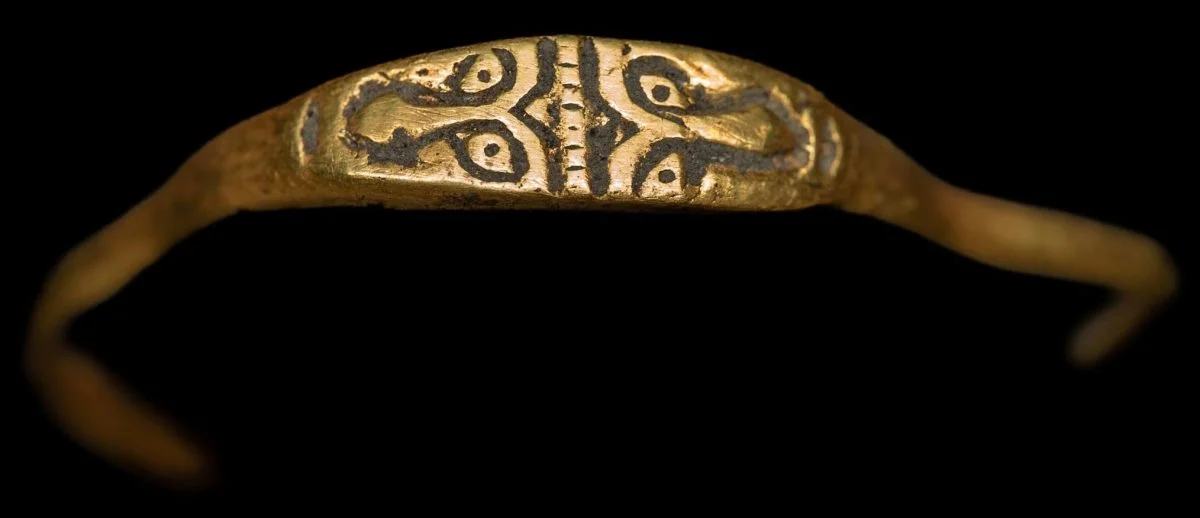Unique two-faced gold ring found in Poland
- February 11, 2024
- 0
A gold ring with an unusual double-sided pattern, believed to date from the 11th or 12th century, was discovered beneath Wawel Castle, the former residence of Polish kings
A gold ring with an unusual double-sided pattern, believed to date from the 11th or 12th century, was discovered beneath Wawel Castle, the former residence of Polish kings

A gold ring with an unusual double-sided pattern, believed to date from the 11th or 12th century, was discovered beneath Wawel Castle, the former residence of Polish kings in the city of Krakow. It is the only one of its kind found on Polish soil.
The images on the ring are inconsistent with the traditional Christian symbolism commonly seen in works of the period. The decoration of the ring, which includes a shield with two opposing sides, may refer to the two-faced Roman god Janus and may indicate a high level of local craftsmanship.
Janus is a unique Roman god with no Greek equivalent. Janus is depicted with two faces. In Rome, he is the god of beginnings and endings, entrances and exits, changes, transitions, doors, gates and arches.
The ring has a thickness of 1.5 mm, a diameter of 4 mm and a circumference of 57 mm. The ring is decorated, which makes it extremely unusual. Only a few early medieval gold rings devoid of ornamentation or with simple geometric patterns have been found in Poland. Researcher Jerzy Trzebinski says this makes the latest finding “unique.” “This is the only example from Poland depicting people (or figures in general) on an early medieval ring.”

Trzebiński believes that the ring was probably a local product and may have belonged to the elite under the Piasts, Poland’s first ruling dynasty, who ruled from the founding of the state in the 10th to the 14th century. The shape of the ring is typical of that period in Poland.
Archaeologists discovered this object in the basement of the Denmark Tower (Wieża Duńska), one of the four residential towers of the castle. King Władysław II Jagailo ordered its construction at the end of the 14th century and the beginning of the 15th century as part of the reconstruction of the existing tower. The tower’s facade was completed later in the sixteenth century.
The ring was discovered on the ruins of an ancient stone structure, most likely a defensive fortification. Wawel Castle dates back to the 11th century, but the hill on which it stands has long been an important center of power.
Source: Port Altele
As an experienced journalist and author, Mary has been reporting on the latest news and trends for over 5 years. With a passion for uncovering the stories behind the headlines, Mary has earned a reputation as a trusted voice in the world of journalism. Her writing style is insightful, engaging and thought-provoking, as she takes a deep dive into the most pressing issues of our time.